“There is but one tree in the pasture,and [the cows] are all collected and now reposing in its shade…
It shows the importance of leaving trees for shade in the pastures as well as for beauty.”
– HENRY DAVID THOREAU, 1850
One hundred and fifty years ago, much of the Northeastern landscape had been cleared for agriculture and grazing; in farm country, forest was generally confined to woodlots, steeper slopes, and higher elevations. But the open landscape was not treeless. As Thoreau observed, trees dotted the pastures. Some were intentionally left as shade trees for cattle and sheep, others sprouted up later around rock outcrops, stone piles, or fences. As people abandoned the fields, forests emerged, and the old, wide-spreading pasture trees were engulfed by young woods.
Today, many of these trees still stand as relics of this older time. Many people in our region know them as wolf trees – a term popularized by foresters during the second half of the 20th century as many old pastures reached an age for first-cutting.* These early foresters suggested that the wide-spreading, old trees were preying on forest resources and, like a wolf, should be culled to make way for merchantable timber. Though no wolves roamed the landscape then, the idea of wolves still haunted people and ran into their management metaphors.
As forestry became more holistic, the way humans – including foresters – looked at wolf trees began to change. Today, best management practices hold that we should keep a certain number of these trees on a woodlot because they are useful to wildlife. Never one to take conventional wisdom for granted, I wanted to see firsthand whether wolf trees did, in fact, support more wildlife than their younger counterparts. So I packed up binoculars, a notebook, a few live traps, and a trail camera, then spent a good part of the summer of 2007 observing who was using these big trees and why.
The experiment was simple. I would locate and observe wolf trees in three different Vermont natural communities – a dry oak forest and a mesic maple-ash-hickory forest in southeastern Vermont, and a Champlain Valley clayplain forest in western Vermont. Where I watched wolf trees, I also watched an equal number of typical, commercially mature forest trees of the same species and in the same stand so that I could compare wildlife use of the two. I searched for signs of animal use, such as nests and scat, and poked my head into hollows and cavities. To understand mammal use, I set small live traps at every tree and motion-sensing cameras at selected trees. And I spent over 100 hours with binoculars and a field notebook doing timed observations for birds. I noted the species, how long a bird visited a tree, and its behavior.
It became apparent almost immediately that wolf trees really are favored by wildlife. Foraging birds were heavily drawn to these trees, visiting twenty times more often than they visited typical forest trees. Scarlet tanagers, known to prefer larger trees, were the most common bird, bouncing limb to limb in search of invertebrates. Brown creepers, which require larger-sized tree boles, frequently gleaned meals from wolf-tree trunks. White-breasted nuthatches, black-capped chickadees, and red-eyed vireos were also common.
Eastern wood pewees, which feed by sallying for insects from a perch, regularly used dead limbs offered by old trees. Overall, 22 species of birds fed on or from wolf trees, as opposed to seven species in typical forest trees. Birds preferred to sing in wolf trees as well – I recorded a combined total of over 60 minutes of bird song in old pasture trees, while singing in typical trees totaled less than two minutes. If you want to watch birds feeding in the forest, or listen to them sing, go park yourself under a big, spreading tree.
I was surprised to find only two nesting birds in the 28 wolf trees I surveyed: a wood pewee and a European starling. I found none in typical trees. You’d think that birds would line up to nest in wolf trees, as they contain abundant nesting sites and food resources. But with all the busyness, maybe old pasture trees are poor places for nestlings, especially since they are also busy with mammals.
In addition to the expected host of squirrels and chipmunks, mammals of all sizes used the old trees. Small mammals, predominantly deer mice, but also voles and shrews, were the most abundant users, though there were not significant differences between the two types of trees. Large and mid-sized mammals did use the wolf trees more frequently. I observed a porcupine and its young porcupette lounging on one large limb; they crawled into the hollow tree after a half-hour observation period. After watching a coyote bolt from a hollowed oak, I stuck my head inside to find six newborn pups wobbling around. Motion-sensing cameras captured white-tailed deer at both tree types, but at wolf trees cameras also caught a group of raccoons and a young bear. In total, I documented 106 incidents from eleven mammal species at wolf trees and 77 incidents from five species at typical forest trees.
Mammalian scat, a communication strategy as well as a physiological necessity, was noted 36 times at the base of the largest trees. Fox, bear, coyote, raccoon, and fisher defecated nine times more often at large trees than at typical, commercially mature forest trees. I realized after seeing the prevalence of “Posted” and “No Hunting” signs hung on such trees what some of these four-legged animals may have been saying.
Besides offering a convenient place for animals to scent-mark, old pasture trees present both animals and their prey with attractive features: big limbs, dead limbs, horizontal branches, rugose and sloughing bark, cavities, and hollows. Because the surrounding forest matrix is comparatively young, it is less structurally diverse and largely lacks these features. The wolf trees are a forest anachronism – old-growth features in a young forest. And wildlife respond to this.
These subtle details in forest structure speak directly to the art and science of forest management. For those whose goal is to grow and sell sawlogs while simultaneously creating high-quality habitat for wildlife, wolf tree retention can be a useful component in the forester’s tool kit. A single wolf tree (or several of them), could allow animals to inhabit an area that might not otherwise have the right forest structure. The brown creeper and coyote puppies are clear examples of this. (The denning porcupines are a clear example, too, though foresters growing sawlogs won’t be thrilled with the idea of porkies in their timber stand.)
Today, we are losing wolf trees to succession. There is a great irony here: the original justification for culling wolf trees – the shading of surrounding trees – now threatens the old trees’ survival. In their prime, pasture trees were growing without competition, in full sun, and photosynthesizing at maximum capacity; their girth, spread, and mass reflects this. With the onset of shade, their photosynthetic activity has been substantially reduced and their great mass can no longer be supported. You can see this clearly as lower branches die and surviving branches reach, not horizontally, but straight up. While some species have more shade tolerance than others, many trees could last another 100 years or more if the shade is kept at bay. Woodlands in Great Britain have a similar phenomenon, and foresters there are initiating practices to retain their old trees (called veteran trees in Europe).
Despite the decline, wolf trees in the Northeast are still relatively common in areas that were dominated by agriculture in the 1800s. I found many such trees on low ridges. I also found old trees near water – small drainages and old ponds where animals would congregate to drink. During spring, I listened for wood frogs, which led me to a vernal pool or wetland and often an old pasture tree. Vernal pools, it seems, once served as seasonal watering holes for domestic animals.
At the end of the study, I concluded unequivocally that wolf trees are a boon to wildlife. Based on the host of human legacies I observed at the trees – the hunting stands, the ladders, the tree forts – it seems that humans have a fondness for them, too.
Thoreau urged us to keep pasture trees not just for shade but for beauty. And yes, all these years later, there’s still something beautiful in these gnarled old forms. There is no symmetry, no youthfulness, but there is a sense of history and mystery, of stories from another time and stories yet to be told. These charismatic old trees witnessed the return of the forest. They remind us that the story of this landscape, and the animals on it, is still unfolding.


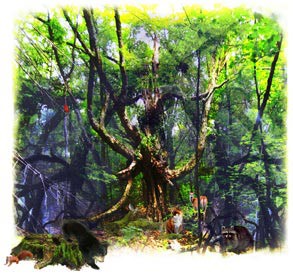
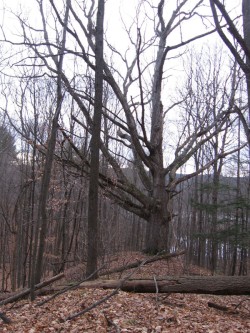
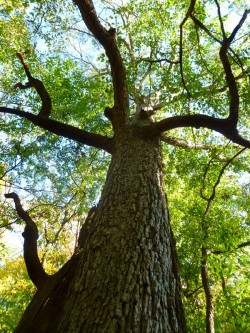
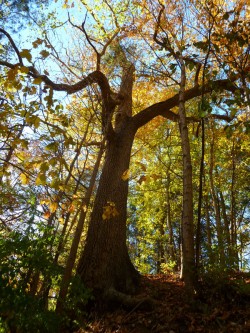
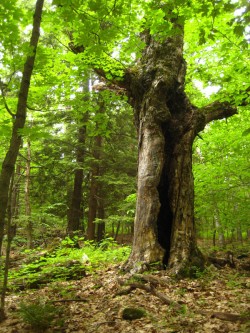
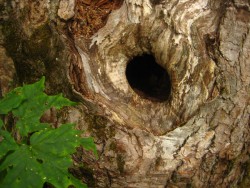
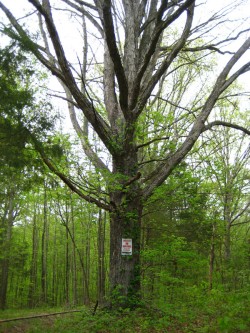
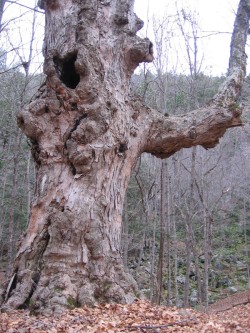
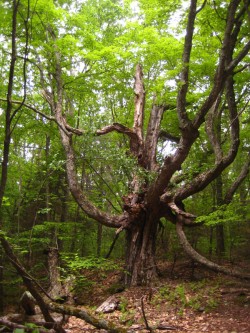
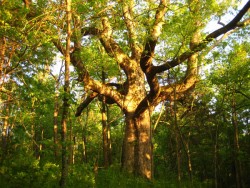
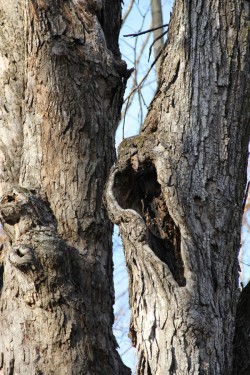
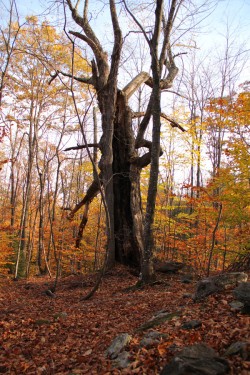
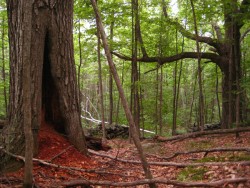
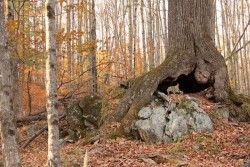
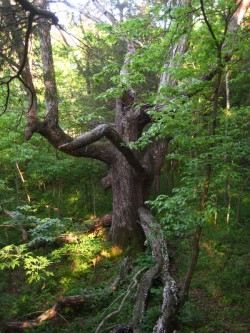
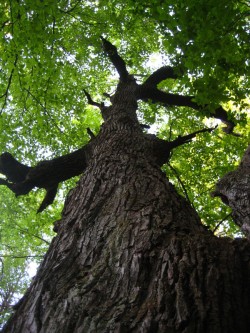
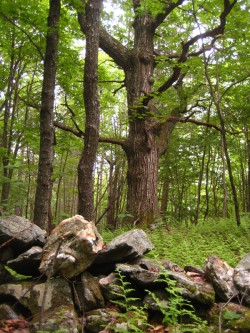
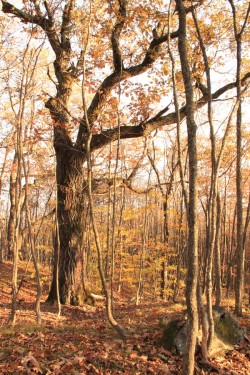
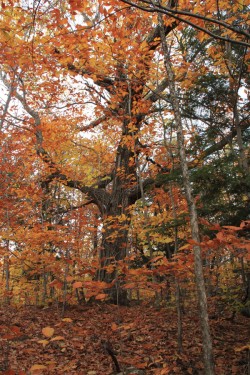
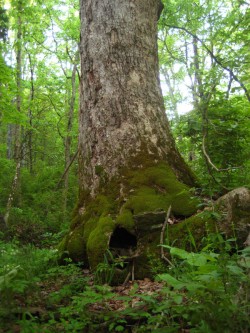
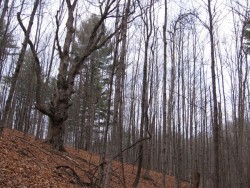
Discussion *